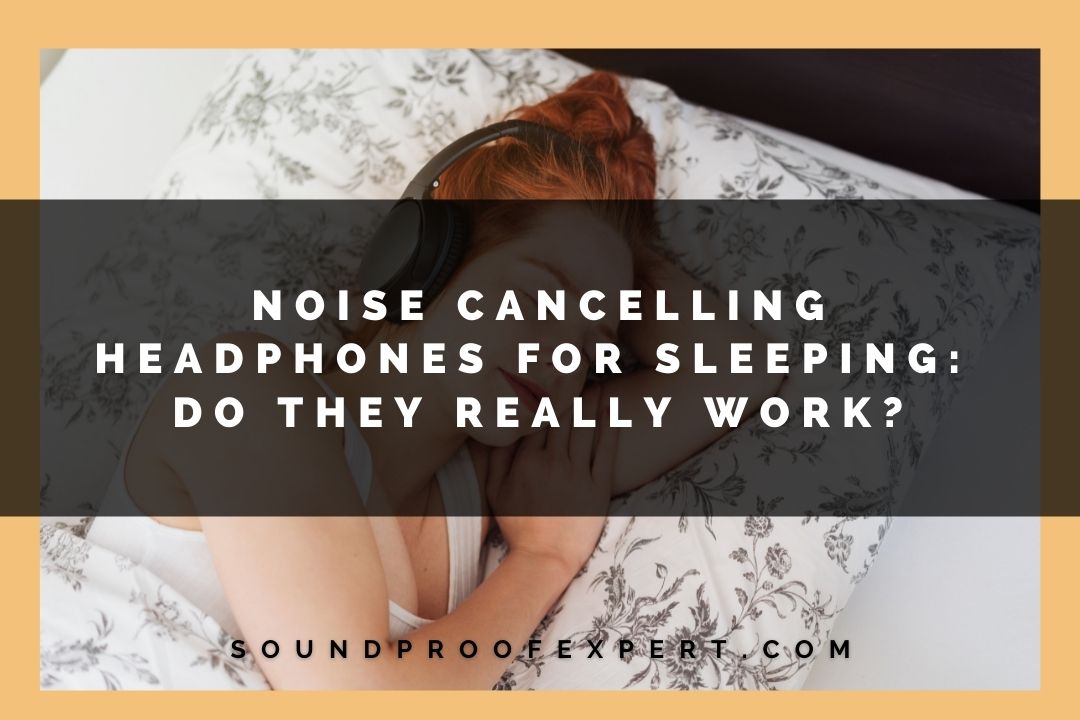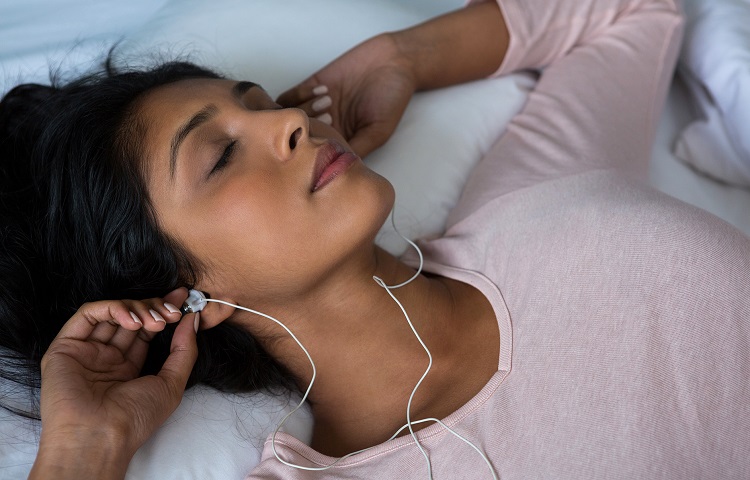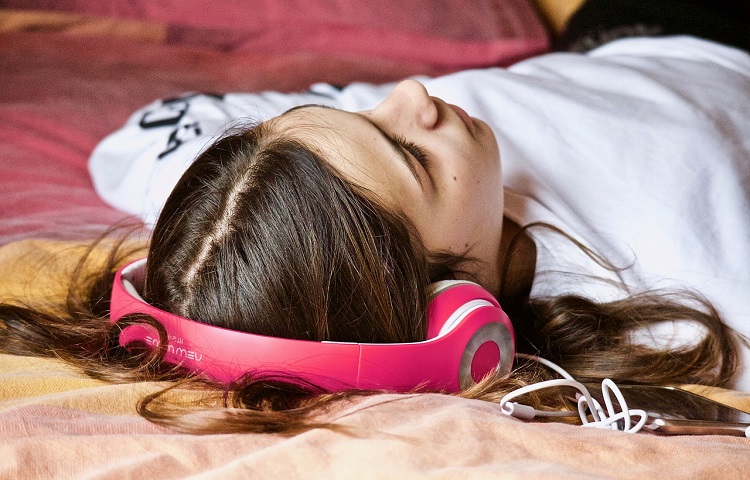
We know what you’re thinking, and we’ll say it out loud. Noise-canceling headphones are a godsend.
They are an engineering marvel that can take your auditory senses on a long strange trip, far, far away from the sounds of the real world. Noise-canceling headphones try to reduce ambient sounds that seep into regular headphones.
They will reduce all the noise around you to a whisper, so you can enjoy your multimedia at a normal volume or sleep in peace in a noisy environment.
You must know that noise-canceling headphones are different from passive headphones, which use soundproofing to reduce surrounding noise. They can help you tune out your surroundings, enabling you to work even in a noisy environment.
You don’t even have to play any multimedia once you’ve put on noise-canceling headphones. Simply putting them on is enough to cut down ambient noise around you.
Let’s take a look at the science behind how noise-canceling headphones work and find out if you can use them for sleeping.
What exactly are noise-canceling headphones?

Noise-canceling headphones are specially engineered headphones that are used to cut down surrounding ambient noise in any situation.
They can be used by anyone and in any place at any time. There is a lot of scientific theory behind this noise reduction.
On the sound spectrum, lower frequencies are the culprits when it comes to making noise. You will find that a lot of noise is essentially a droning sound that exists in low frequencies.
While noise contains some high-frequency elements, most of it dissolves into a soft buzzing sound. Noise-canceling headphones use Active Noise Control (ANC) to reduce these lower frequencies so you cannot hear them.
Sound-related physics states that sounds that are ‘out of phase with each other’ are canceled. It is the principle on which noise-cancellation works. Noise-canceling headphones capture the surrounding ambient sounds using an inbuilt microphone. Then, they generate a sound wave that is deliberately out of phase with the ambient noises.
Ultimately, the noise is effectively canceled, and you only hear that part of the sound in phase – your multimedia, other mid-frequency sounds that were not a part of the noise, etc.
It is essential to know that noise-cancellation works only on constant droning sounds. If a sound is out of the ordinary, you will hear it through the headphones. For example, if you are standing in a crowded place with your headphones on, you might drown out the sound of the crowd, but your headphones will not work on a sudden thud in the surrounding.
Higher frequency sounds like ‘hiss,’ or sonorous sounds are not entirely affected by noise cancellation. They are combated using soundproofing.
Since you cannot use phase cancellation tech against high-frequency sounds, we must rely on sound isolation or soundproofing to cut them down.
Can you sleep with noise-canceling headphones on?

Yes, you can sleep with noise-cancellation headphones on. They are used as sleeping aids by people suffering from sleep disorders.
Sleep disorders like insomnia have made people unable to sleep in the presence of noises like snoring, droning, or car horns, etc. Noise-canceling headphones are a one-stop-shop solution for these people.
Some people might also have sleep-related woes during travel. Traveling by train or by air is bound to be noisy. The constant buzzing noise inside the cabin of an airplane and the constant air-conditioning noise or sounds of metal tracks on trains can be enough to keep a person awake.
So, to effectively keep this noise out of your ears, you can wear either active noise-canceling headphones or passive ones, too. Active noise-cancellation involves phase cancellation technology that is fitted in a circuit inside the headphones. On the other hand, passive noise cancellation involves soundproofing and sound isolation.
You must have seen people wear small earplugs on flights. These earplugs are a part of sound isolation techniques. Earplugs dampen the frequencies that enter your ear, decreasing their volume as they come into contact with your eardrum. Meaning, loud noises will be less loud as you try to sleep, thanks to earplugs.
If you are worried that you might miss important announcements during travel, like the ones on airports or train stations, because of noise-canceling headphones, then fret not.
Noise-cancellation headphones will actively tune out the constant noise in your surroundings, but they will not hamper the sound in announcements. Travel announcements are comprehensively loud mid-frequency sounds that will not be affected as much in noise-cancellation headphones.
There is only one issue with noise-canceling headphones when it comes to sleeping. They are often bulky and over-the-ear headphones, making it difficult to rest your head comfortably, primarily if you lie down.
If you are trying to sleep sitting up, they can still be a tad bit heavy for your head. So, ensure that you buy comfortable headphones that will allow you to sleep. You can look for in-ear devices that will reduce the noise in your travels.
Where else can you use noise-cancellation headphones?

Noise-cancellation headphones are closely associated with air travel and aviation. At the height of the 20th century, Dr. Lawrence Fogel created the first noise-canceling headphones specifically for the aviation industry.
Pilots, air traffic controllers, and even some passengers would come to benefit significantly from this invention. Since communication between pilots and air administrators is of utmost importance, it is evident that the information relay must be crystal clear. And noise cancellation headphones are used to prevent aircraft noise from muddying the sound.
If you plan to listen to music in loud, crowded, or noisy places, noise cancellation headphones are a good choice. When in a noisy place, we tend to turn up the volume of our music substantially. These abnormal volume levels can harm the eardrum and can potentially hamper hearing. With noise-cancellation headphones, we can listen to our music coherently without raising the volume level.
It is essential to understand that active noise-cancellation headphones will only lower frequencies in the 50-1000 Hz range.
So, if you are looking to combat sounds like people talking, dogs barking, or loud music playing, then active noise cancellation is not for you. You are better off wearing sound isolation headphones or earplugs for this purpose.
Conclusion
For frequent fliers and travelers, noise cancellation headphones are a blessing. They are instrumental in reducing the fatigue of weary travelers by a lot.
A twelve-hour flight without the constant buzzing cabin noise feels like a much shorter flight. These noise-cancellation headphones will work wonders for people looking to get some sleep in. For people with sleep disorders like insomnia, these headphones might help reduce the in-flight noises to a barely audible hum.
There are two ways in which we have taken the ambient noise down a notch. Proprietary noise-cancellation headphones will use active phase cancellation technology to cut down the lower frequencies of sound.
On the other hand, passive noise cancellation is achieved by earplugs or soundproof headphones that create a cavity in your ear and effectively dampen the sound around you. These are more useful for a general day-to-day setting, where the annoying barking of a dog will be less intrusive than usual.
Noise cancellation headphones will help you relax and sleep. However, it would be best to buy a comfortable pair of headphones to avoid discomfort while falling asleep.
There are many lightweight and ergonomic noise-cancellation headphones on the market that are designed to soothe all travelers. So, if constant low-volume noises frequently surround you, buy your pair of noise cancellation headphones now.
